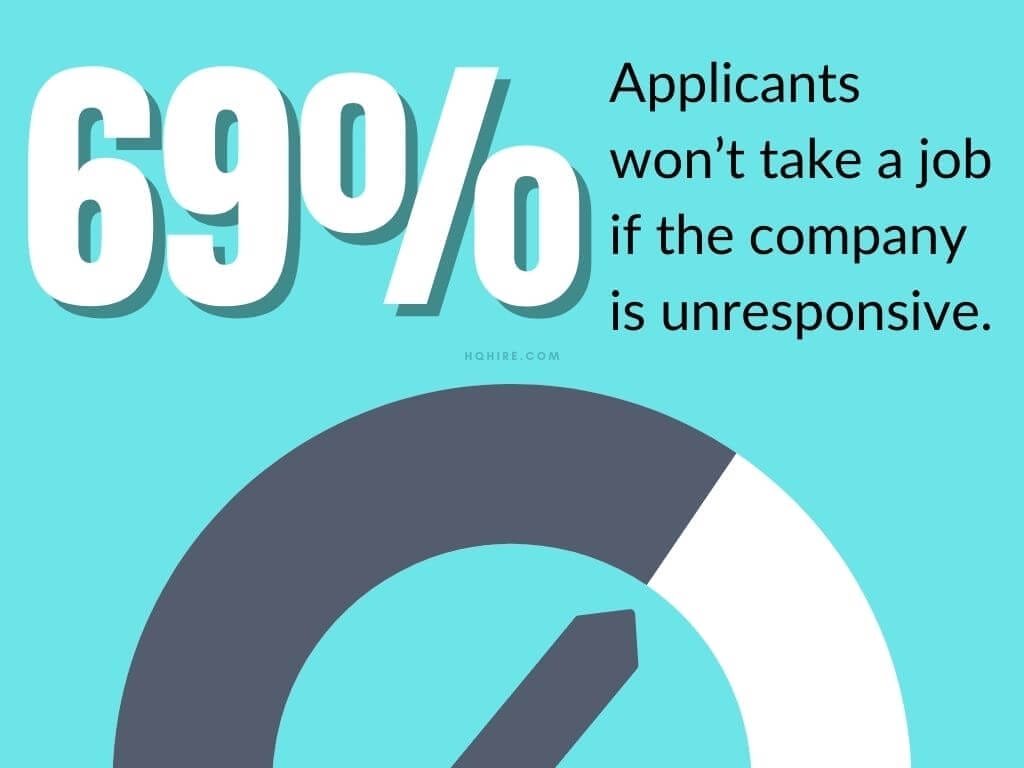Are you using Applicant Tracking Systems (ATS) to find your top hire? ATS plays a vital role in the recruitment process by helping organizations quickly identify and track candidates. Reducing hiring costs, and finding the right candidate fast and effectively.
But is it really the case?
ATS has a reputation for scaring job candidates who might have been a great fit for the company. Leaving many job applicants to seek help from Resume Writing Services to improve their chances of ‘beating’ the ATS system and getting a chance to have their resume seen by a human recruiter.
Applicant Tracking System (ATS) Statistics on Hiring
ATS can help you learn more about your potential hires and ease the hiring process by collecting application data, managing applicant flow through the application process, and providing feedback to applicants.
Do they have the right skills and experience? Do they have the right fit with your organization?
But these statistics of the Applicant Tracking System prove that you might be wrong when making your hiring decision based on a computerized system such as the ATS, and are hiring like an ATShole.

Applicant Tracking System Statistics for Recruiters
1. 75% of recruiters and hiring managers use some type of application tracking system during their recruitment process to help facilitate the hiring process. (Source)
2. 98% of Fortune 500 companies use the applicant tracking system to find potential candidates. That is 491 out of 500 companies that use ATS for their hiring process. (Source)
3. 94% of recruiters and hiring professionals find the applicant tracking system has helped them to improve their hiring process in some way or another. (Source)
4. 5% of HR professional dislike the use of application tracking system and 1% feels neutral towards the use of application tracking system during the recruitment process (Source)
5. 75% of all qualified candidates are rejected by ATS because the system can’t read the resume correctly due to issues such as; formatting (use .doc or .text and avoid using .pdf), and keywords. (Source)
6. 70% of the resume that doesn’t match the required criteria are removed by the applicant tracking system. (Source)
7. 86% of HR professionals find using an applicant tracking system has helped them to hire faster. (Source)
8. 78% of recruiters confirm that the applicant tracking system has improved the quality of hire. (Source)
Applicant Tracking System Statistics for Applicants
1. 80% of the candidates will rather engage a hiring manager than apply for a job through an online form that will be processed by the applicant tracking system. (Source)
2. 40% of the candidates will try to contact human resources through the company website even after applying for a job through an online form. (Source)
3. 30% of the candidates won’t spend more than 15 minutes filling up an online job application. (Source)
4. 64% of applicants aged 25 to 35 won’t spend more than 15 minutes filling up an online job application. (Source)
5. 35% of applicants aged less than 25 will be willing to spend 45 minutes or more on a single application. (Source)
6. Resume length does not matter as much as the applicant tracking system is looking out for keywords, but if the resume is all fluff, it will still be thrown off by the recruiter. (Source)
7. Writing skill matters as they will impact their relevance score and assessment score when read by the applicant tracking system. (Source)

Applicant Tracking System Statistics for Companies
1. 40% less turnover rate for new hires that are identified by the Applicant Tracking System. (Source)
2. 20% faster in filling job vacancies in the company which increases the effectiveness of the company. (Source)
3. $10,000 savings for small companies and more savings for bigger companies which can mount up to millions of dollars per year. (Source)
4. 69% of applicants won’t take a job if the company is unresponsive, Applicant Tracking System helps automate communication with potential candidates which makes the application process smooth and dynamic. (Source)

What Can You Understand From The ATS Statistics?
Applicant tracking systems are a valuable resource for employers and job seekers alike.
- Job seekers can better understand their odds of being selected for a position and modify their applications accordingly.
- Employers can use this information to improve their recruitment process and find the best candidates for their open positions.
Applicant tracking systems are valuable tools that can help organizations identify and assess the strengths and weaknesses of candidates.
However, it is important to be aware of the limitations of these systems and to use them in conjunction with other methods of assessment.
Read Also:
- How to Become a Game Graphic Designer in the Gaming Industry?
- How to Become a Freelance Graphic Designer (Freelancer’s Guide)
- How to Become a Fashion Graphic Designer (Complete Guide): Your Path to Creative Success
- How to Become a Graphic Designer (A to Z Guide)
- How to Evaluate a Remote Job Offer (It’s About YOU)
Join over 11,000+ achievers who are committed to achieving their career goals!




![100+ Best Soft Skills to Put on Resume [According to Statistics] 7 100+ Best Soft Skills to Put on Resume [According to Statistics]](https://er6kyrw7tpi.exactdn.com/wp-content/uploads/2022/08/List-of-The-Best-Soft-Skills-For-Resume-At-Work-768x402.jpg?strip=all&lossy=1&ssl=1)


